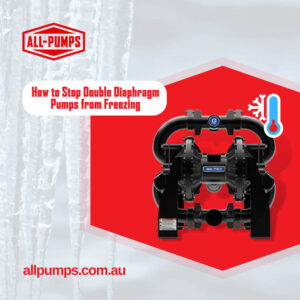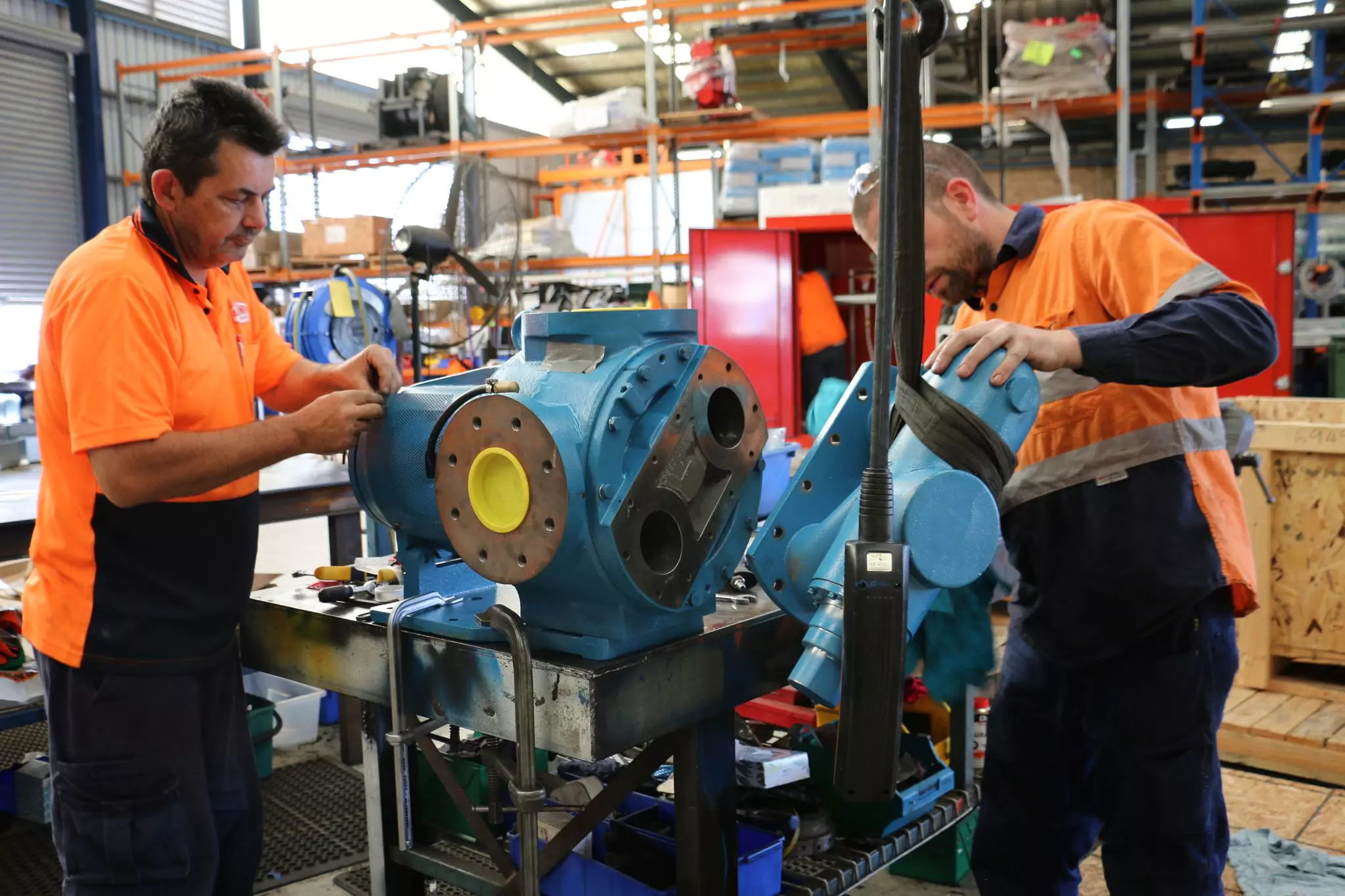Air-operated diaphragm pumps have earned a reputation in the industry as the low-maintenance, easy-to-operate pump option–and rightfully so. However, seasoned diaphragm pump operators know the importance of getting clean, dry air to their pumps in order to avoid a common challenge: freezing. Built-up ice can block your pump’s exhaust system, resulting in slowing or stopping production. This post will briefly explain how freezing happens as well as several steps All-Pumps has taken to prevent freezing in our air-operated diaphragm pumps.
INDICATIONS OF ICING IN AIR DIAPHRAGM PUMPS
Before you try to fix an icing problem, you should be reasonably sure that icing is the problem. You likely have an icing problem if the following conditions exist:
- The pump has erratic pressure fluctuations
- The air motor stops but will restart after the ice melts
- This may take an extended period of time
- The motor or muffler is heavily frosted
- The compressed air you are using is moisture-laden because little or no drying equipment is installed
- You need to do air supply or fluid control adjustments to maintain a constant cycle rate (This problem may be temporary if it is a seasonal fluctuation in humidity)
CAUSES OF FREEZING IN AODD PUMPS
Compressed air expands as it runs through the air-operated diaphragm pump and becomes very cold very quickly, sometimes dropping down to -10°F. These low temperatures typically are a result of using the pump at high discharge pressures. Cold air can’t hold as much water vapour as warm air, so this creates a condition known as “super-saturated air,” when the air contains more moisture than it can hold in a stable condition.
Ice forms when that super-saturated air impacts a cold surface, such as a bend in an exhaust pipe or someplace that acts as a seed surface for vapour to condense on.
Points of impact build up ice for two reasons:
- They provide a place for tiny ice particles in the air to stick. Any points of impact—anything that sticks out into the airflow—becomes a place where ice build-up can occur.
- The surfaces are colder, so they accumulate ice through deposition faster. The deposition is where vapour in the air turns directly into solid ice on a surface. Ice buildup is highly dependent on the surface temperature. In the same way that wind-chill is the worst when you are facing directly into the wind, surfaces that are impacted by cold air will be colder.
One step you can take to reduce the freezing problem is to install a dryer on your compressor and only run clean, dry air through your pumps. Removing the muffler—including the muffler plate and rubber seal—is one solution that usually eliminates icing completely, as ice typically only forms on those components. However, the increased exhaust noise usually makes this option impractical for most users. Adding a dryer should be the first step to minimizing the freezing issue.
FLUIDS BEING PUMPED CAN CONTRIBUTE TO FREEZING

Fluids with a higher viscosity will cause the pump to work harder and could contribute to more ice build-up.
For example, consider a 1 inch Graco air diaphragm pump (AODD) running at 60 psi inlet air pressure. If this pump is running at 10 psi discharge pressure, the temperature at the exhaust will be around 42°F. However, if this same pump is running at 55 psi discharge pressure (closer to its maximum capacity) the temperature at the exhaust will be about 2°F.
As the pump approaches its maximum capacity, the temperature at the exhaust significantly decreases, which can result in freezing.
Other Causes
- The volume of air supply is too high for the application and excess air is being released through the exhaust system
- Long duty cycles
- High dew point applications
- Cooler weather
- Moisture-laden / poor-quality compressed air with little or no drying equipment
- High viscosity fluids can cause the pump to work harder
PREVENTING AODD PUMP FREEZING PROBLEMS
At the muffler exhaust, air temperature can drop below freezing point and can cause icing-related issues such as slow operation or pumping completely put to stop. This problem is increasingly common in humid environments.
Suggested below are solutions you may implement to eliminate these issues and restore your pump performance.
Solutions:
- Change the muffler material from metal to plastic. Plastic is less conductive than metal and therefore the plastic material won’t get as cold.
- Increase the size of the muffler. By increasing the surface area it delays the time it takes to fully cover the muffler with ice.
- Remove moisture from the air supply by adding a dryer to your compressor system or a simple water trap with a drain to collect condensation.
- Run the pump at a lower speed by lowering the air pressure.
- Fit the muffler on a rubber extension hose to reduce the conductivity and increase the surface area
- Check the muffler isn’t contaminated and clean it
- Ensure the correct inlet/outlet pipe sizes are used for connections and don’t under size pipe work
- Install a larger AODD pump to operate at a lower speed
- Muffler Plate with Heat Sink. Iice buildup could be dramatically reduced by adding a large heat sink to the muffler plate.
- Straight exhaust path. The fewer turns the air has to take, the fewer opportunities there are for ice to form and accumulate. But when surfaces obstruct or redirect air flow, ice can form
- Single exhaust. A common, single exit port for the main exhaust allows cold air to exit directly into the muffler with minimal contact with impinging surfaces.
WRAP UP
Solutions to icing can range depending on the application and environmental conditions, but reducing the air pressure to the pump is one of the quickest and most effective ways to reduce icing. The other suggestions above are field-tested techniques to prevent icing on your AODD pump. Overall, if you think you have an air motor icing problem and are seeking the best solution for your specific application, contact your local pump specialist like All Pumps. Our pump experts will be able to assess the problem and provide you with the most cost-efficient, practical solution.



